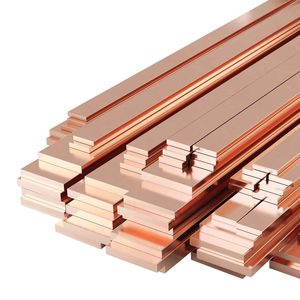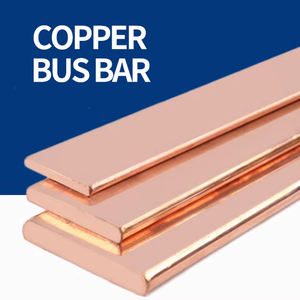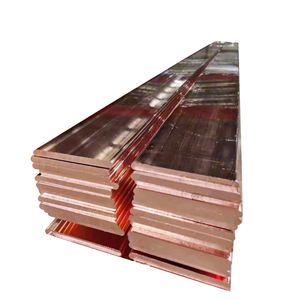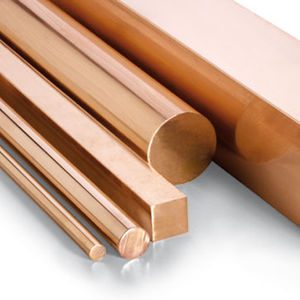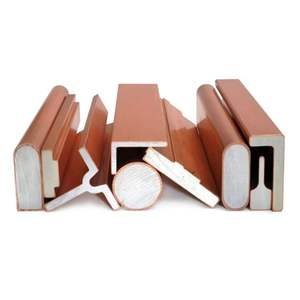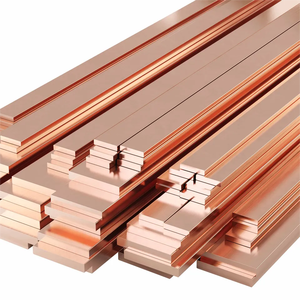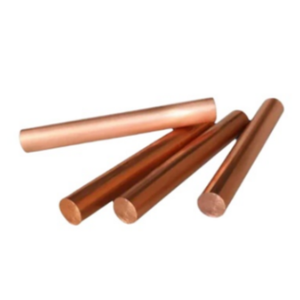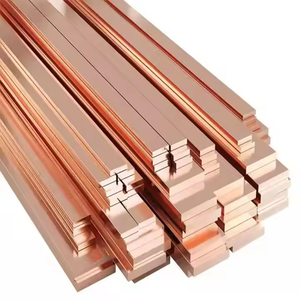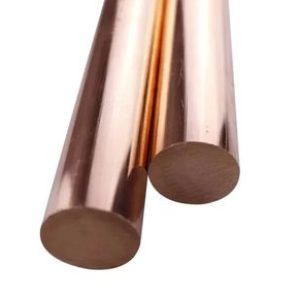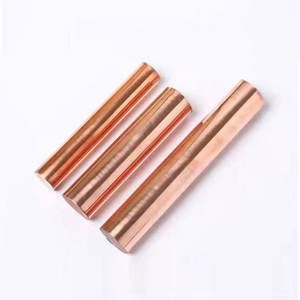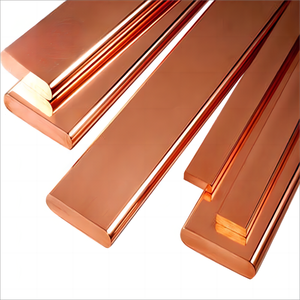Copper bars are widely used in electrical, construction, and industrial applications due to copper’s excellent electrical conductivity, thermal conductivity, and formability. Here are some key parameters for copper bars:
- Chemical Composition: Pure copper bars are primarily composed of copper (Cu), with a minimum copper content of 99.9% for electrolytic tough pitch (ETP) copper and 99.95% for oxygen-free copper (OFC). Impurities like oxygen, silver, iron, sulfur, and phosphorus may be present in trace amounts.
- Standard Designations: Copper bars adhere to various international standards, such as ASTM B152 for copper sheet, plate, strip, and rolled bar, and ASTM B187 for copper bus bar. Other common standards include C10100 (OFHC – Oxygen-Free High Thermal Conductivity), C10200 (ETP – Electrolytic Tough Pitch), and C12200 (DWV – Drain, Waste, Vent).
- Dimensions: Copper bars come in various sizes, with dimensions specified by diameter, width, and length. Diameter can range from small rods (e.g., 1/4 inch) to large bars (up to several inches), while lengths can vary greatly, often custom-cut to customer specifications.
- Density: The density of pure copper is approximately 8.96 g/cm³.
- Melting Point: The melting point of copper is 1084°C (1983°F).
- Conductivity: Copper is an excellent conductor of electricity and heat. Electrical conductivity for ETP copper is around 58 MS/m (at 20°C), while OFHC copper can have conductivity up to 101 MS/m.
- Thermal Conductivity: Copper’s thermal conductivity is around 385 W/(m·K) for ETP and up to 401 W/(m·K) for OFHC at room temperature.
- Tensile Strength: The tensile strength of copper bars varies depending on the alloy and temper, ranging from approximately 200 to 520 MPa (30,000 to 75,000 psi).
- Elongation: Elongation at break, a measure of ductility, can range from 20% to 50%, depending on the copper grade and processing.
- Finish: Copper bars can be supplied in various finishes, including smooth-drawn, bright annealed, or rough-cut, depending on the intended application.
- Corrosion Resistance: Copper is naturally corrosion-resistant, especially in atmospheric and marine environments, though it can corrode in the presence of certain acids and salts.
- Typical Applications: Copper bars are used in electrical conductors, bus bars, heat exchangers, architectural applications, sculptures, and a variety of industrial machineries and components where high electrical and thermal conductivity is required.
